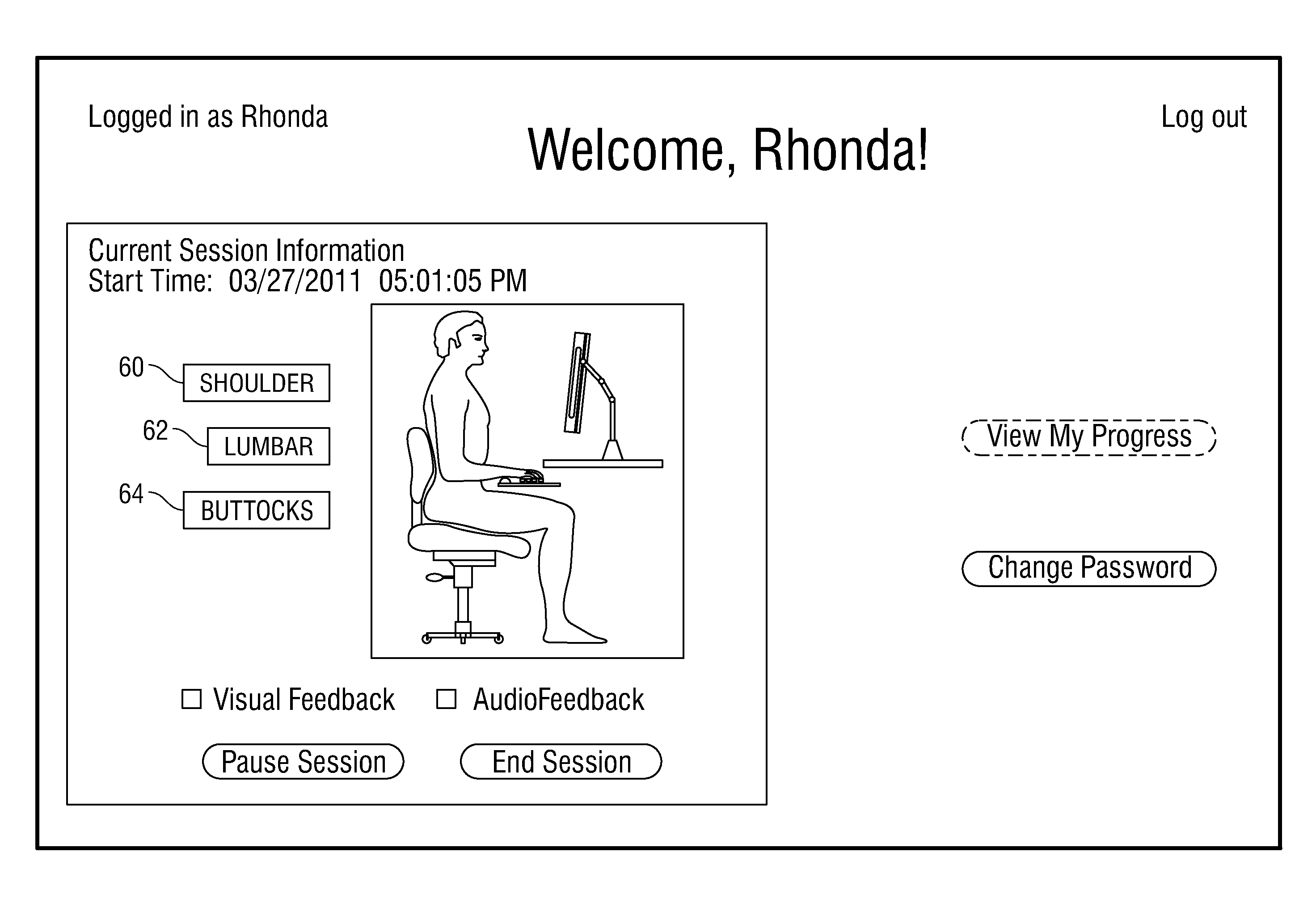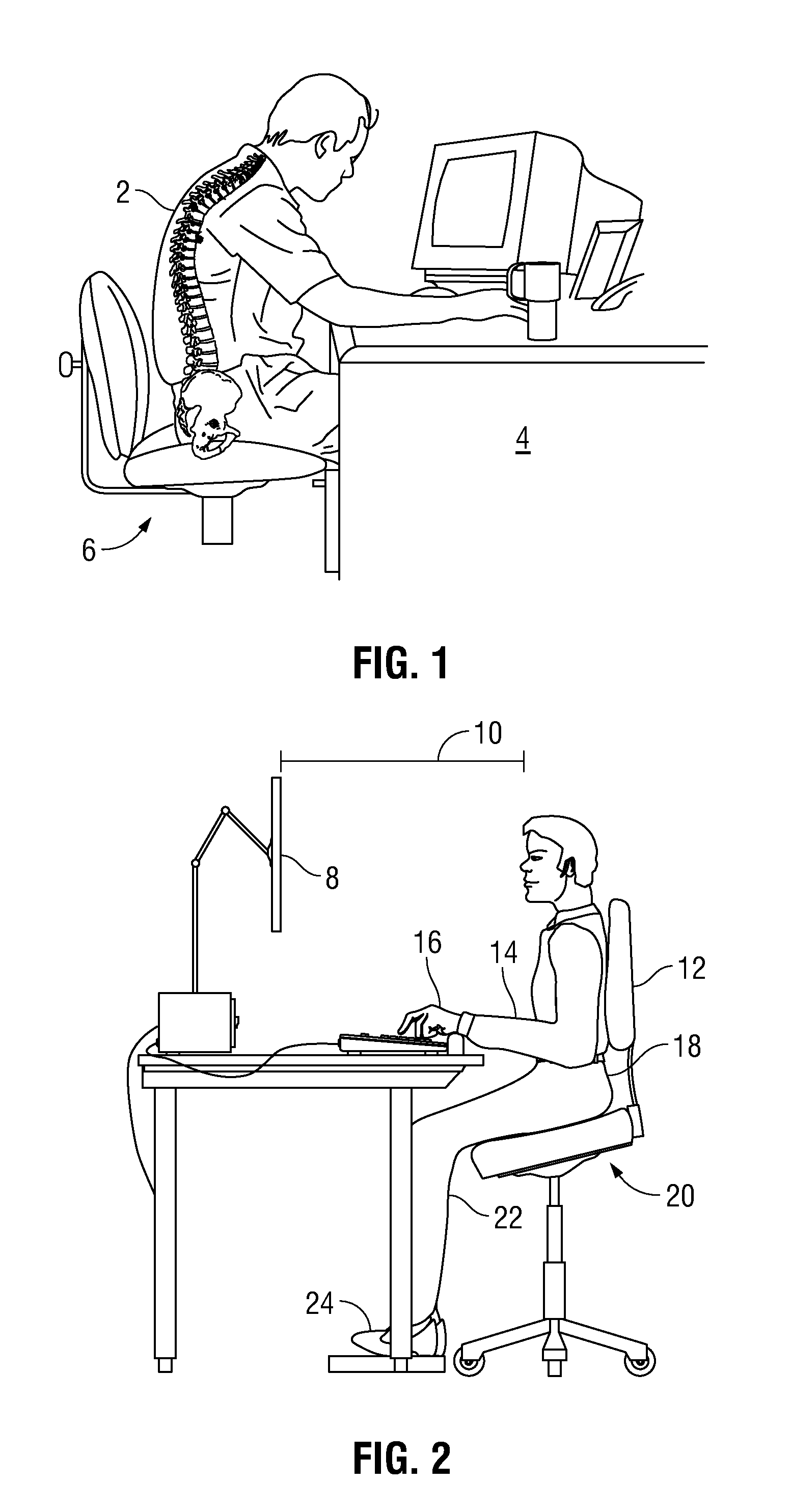Ergonomic Sensor Pad with Feedback to User and Method of Use
a sensor pad and user technology, applied in the field of ergonomic devices and methods useful for improving posture, can solve the problems of increasing the number of reported health problems and repetitive stress injuries, increasing the risk of future injury to the neck, back and extremities, and being more susceptible to poor posture and rsi when they are older. , to achieve the effect of preventing the development of repetitive stress injuries to the neck, back and extremities, and healthy sitting habits
- Summary
- Abstract
- Description
- Claims
- Application Information
AI Technical Summary
Benefits of technology
Problems solved by technology
Method used
Image
Examples
Embodiment Construction
[0030]An embodiment of the present invention includes an ergonomic chair pad 30 configured such that the ergonomic chair pad can be attached to a chair. The ergonomic chair pad can be formed of any suitable material, such as fabric, foam, leather or plastic. An ergonomic chair pad of the present invention includes at least two portions, hereinafter referred to as either portions or pads. One pad 32 generally corresponds to the seat portion of a chair and another pad 34 generally corresponds to the backrest portion of a chair. Embodiments of the ergonomic chair pad 30 of the present invention can be formed as a single unit, with a seat pad 32 and a back pad 34 connected at a fold in the chair pad material, as separate pads operably connected to one another, or a separate pads adapted to be positioned so as to operate with each other according to the present invention. As shown in FIG. 6, the ergonomic chair pad 30 can also include, in a further embodiment, a separate additional attac...
PUM
 Login to View More
Login to View More Abstract
Description
Claims
Application Information
 Login to View More
Login to View More - R&D
- Intellectual Property
- Life Sciences
- Materials
- Tech Scout
- Unparalleled Data Quality
- Higher Quality Content
- 60% Fewer Hallucinations
Browse by: Latest US Patents, China's latest patents, Technical Efficacy Thesaurus, Application Domain, Technology Topic, Popular Technical Reports.
© 2025 PatSnap. All rights reserved.Legal|Privacy policy|Modern Slavery Act Transparency Statement|Sitemap|About US| Contact US: help@patsnap.com



